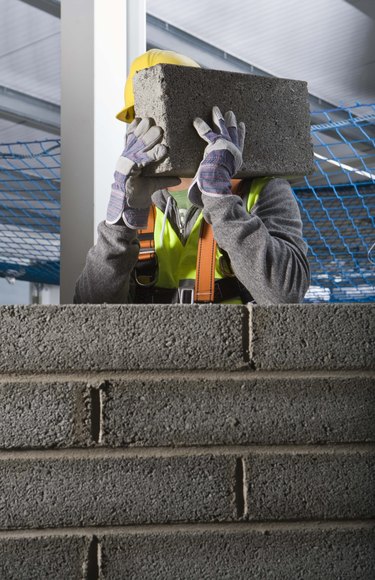
Block retaining walls have been used around the world for years, either as a decorative addition to backyards or as an actual structural element holding back dirt or sand. While you can build retaining walls without any sort of structural support inside, you can only go so high before you need to add rebar or some other form of metal support to help shore up the wall as it continues to rise.
Average
Video of the Day
Most retaining walls, whether load-bearing or not, average between 3 and 4 feet in height. As a general rule, you do not want to build any sort of structure over 4 feet in height without including some type of structural support within. Without support, you can stack the blocks on top of each other up to around 4 feet, but there are other concerns above and beyond simple height that can affect the stability of the wall.
Video of the Day
Type of Soil
While the 4-foot height cap is more of a recommendation than anything else, the type of soil you are dealing with will influence this number. The harder the soil, the less concerned you need to be, but if you are building on top of clay or sandy soil, there are engineering elements that need to be taken into account. For any wall that is over 4 feet in height, you should contact a structural engineer to test the soil and help you plan your block wall.
Footer or No
Another aspect in determining if you can build a retaining wall beyond the 4-foot measurement is whether you have a footer in place. A concrete footer is a platform of concrete poured into a trench in the ground, giving the wall a support so that it won't sink into the soil from the weight of the blocks. As long as you are engineering your wall, you can go as high as you want so long as you provide the proper support.
Load-Bearing
Load-bearing walls beyond 4 feet in height have special concerns. Just like with any other type of structural (noncosmetic) wall, you need to work with an engineer to determine specifics in regard to height and types of additional support you can build into and with the wall. Otherwise, for cosmetic walls you can go up around 4 feet before you have to worry about an engineer.